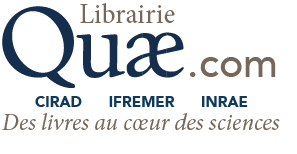Can organic agriculture cope without copper for disease control?
Synthesis of the Collective Scientific Assessment Report
Livre papier 40,00 €
Livre papier 26,00 €
Livre papier 36,00 €
Livre papier 32,50 €
Livre papier 30,00 € 24,00 € (-20%)
Livre papier 39,00 €
Livre papier 26,00 €
Livre papier 28,00 €
Livre papier 29,00 €
Livre papier 25,00 €
Livre papier 35,00 €
Livre papier 34,00 €
Livre papier 28,00 €
Livre papier 25,00 €
Livre papier 39,00 €
Livre papier 29,00 €
Livre papier 25,00 €
Livre papier 25,00 €
Livre papier 35,00 €
Caractéristiques
Langue(s) : Anglais
Éditeur : Éditions Quae
Édition : 1re édition
Collection : Matière à débattre et décider
Publication : 31 octobre 2023
Référence eBook [ePub] : 02728EPB
Référence Livre papier : 02728
Référence eBook [PDF] : 02728NUM
EAN13 eBook [ePub] : 9782759231560
EAN13 Livre papier : 9782759238385
EAN13 eBook [PDF] : 9782759238392
DOI eBook [PDF] : 10.35690/978-2-7592-3839-2
Intérieur : Couleur
Format (en mm) Livre papier : 145 x 210
Nombre de pages Livre papier : 120
Nombre de pages eBook [PDF] : 120
Poids (en grammes) : 180
Taille(s) : 2,4 Mo (ePub), 2,72 Mo (PDF)




























